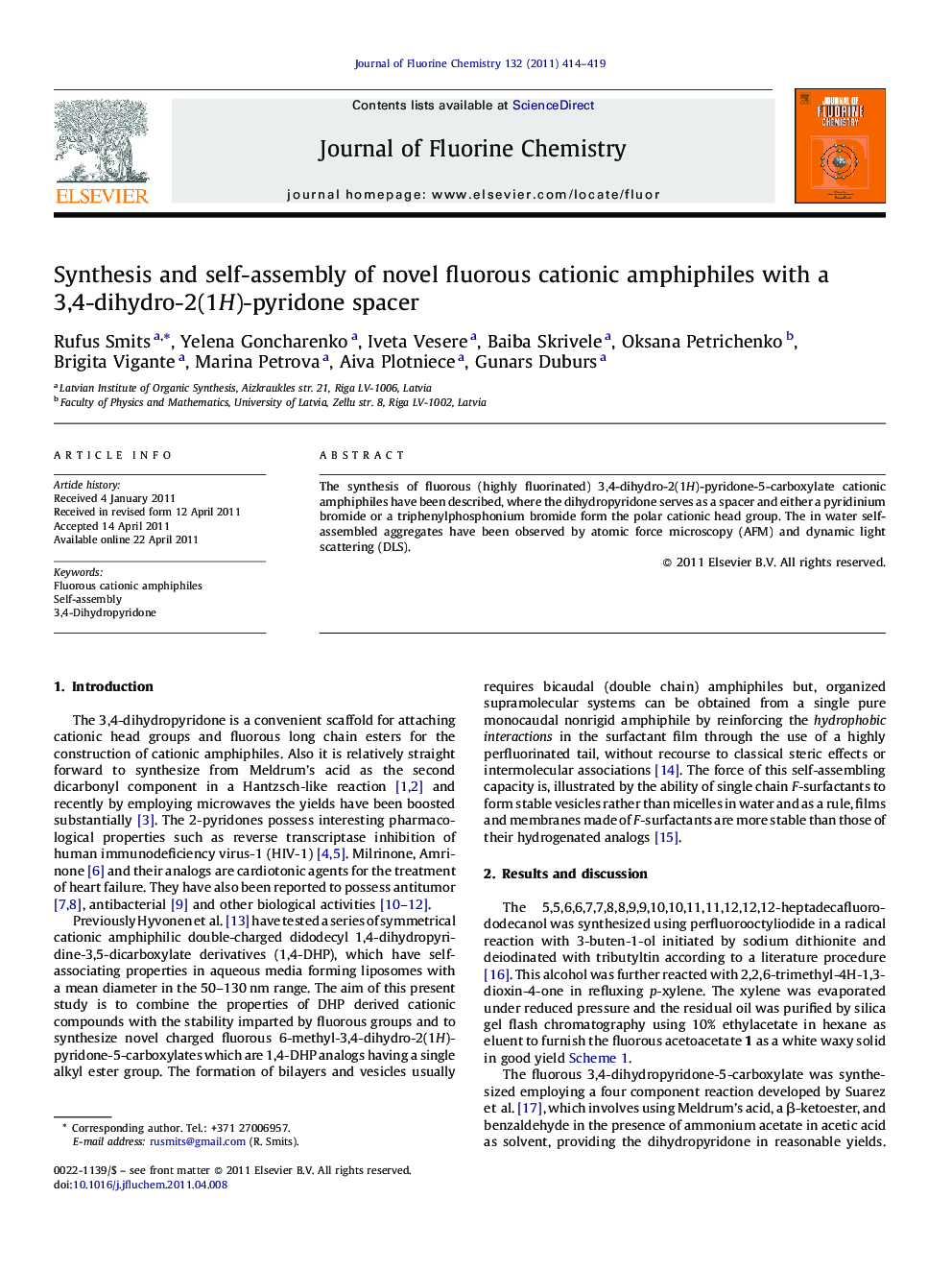| Article ID | Journal | Published Year | Pages | File Type |
|---|---|---|---|---|
| 1314963 | Journal of Fluorine Chemistry | 2011 | 6 Pages |
The synthesis of fluorous (highly fluorinated) 3,4-dihydro-2(1H)-pyridone-5-carboxylate cationic amphiphiles have been described, where the dihydropyridone serves as a spacer and either a pyridinium bromide or a triphenylphosphonium bromide form the polar cationic head group. The in water self-assembled aggregates have been observed by atomic force microscopy (AFM) and dynamic light scattering (DLS).
Graphical abstractFigure optionsDownload full-size imageDownload as PowerPoint slideHighlights► Four component synthesis of a fluorous 3,4-dihydropyridone-5-carboxylate. ► Allylic bromination of the 6-methyl group using bromine in chloroform and isolation of the 6-bromomethyl-3,4-dihydropyridone product. ► Substitution of the bromine by either pyridine or triphenylphosphine to furnish cationic fluorous 3,4-dihydropyridone-5-carboxylate amphiphiles. ► Self-assembly of the above cationic amphiphiles in aqueous solution forming nanoaggregates which are observed by atomic force microscopy. ► Hydrodynamic diameters of the nanoparticles in solution have been determined by dynamic light scattering.
